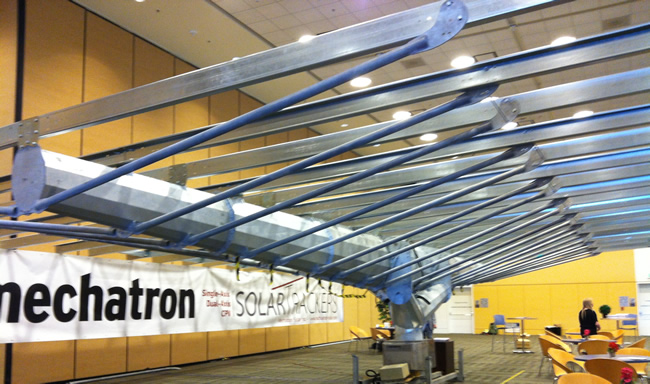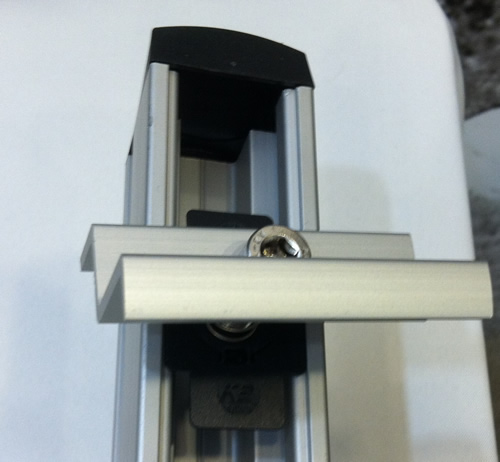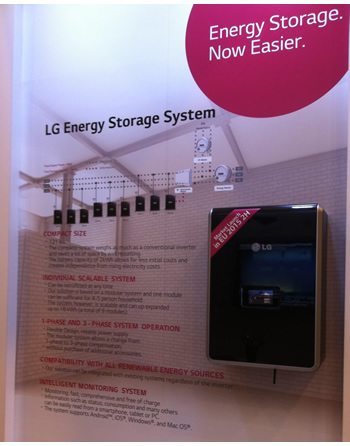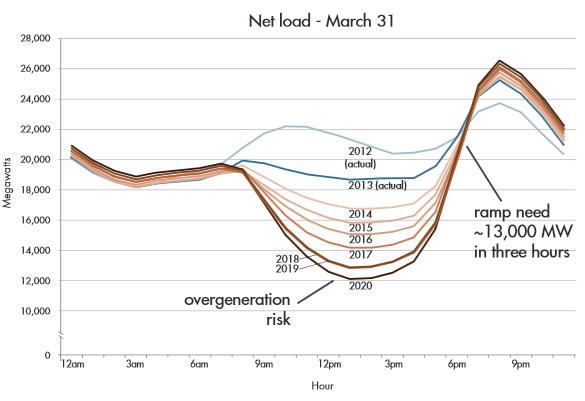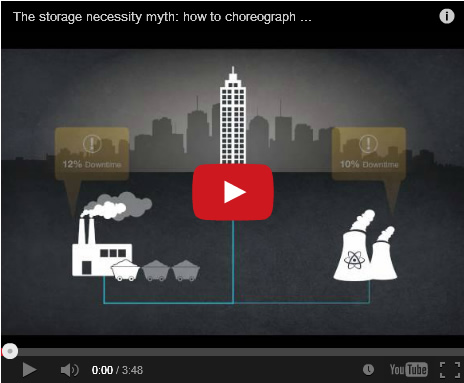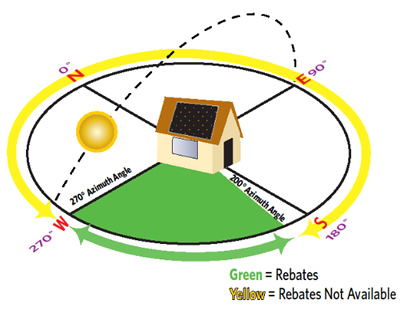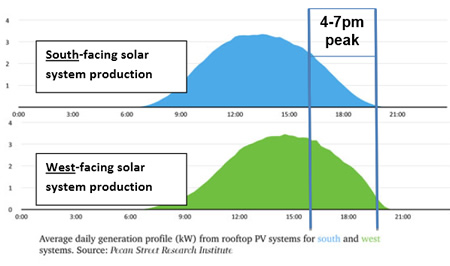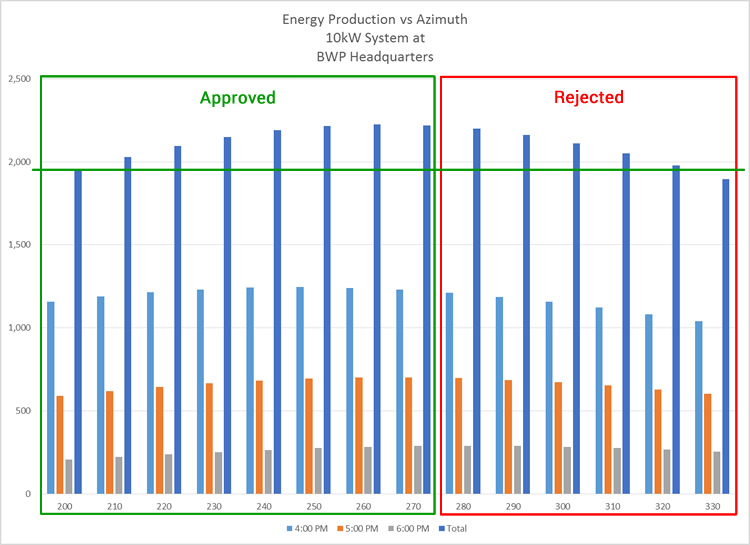Welcome to the
Run on Sun Monthly Newsletter

In this Issue: |
July, 2014
Volume: 5 Issue: 7
Intersolar Wrapup: Sexism Declines, but Chaos LoomsWe spent some quality time on the exhibit floor, and at the social events, of July's Intersolar North America and here's our take. Overall Impressions - Does Size Matter?The show felt smaller, to be sure, and we didn't see anything that created a real "Wow" moment. (Possible exception, the mini solar race cars which were very cool, but they didn't really have much to do with anything.) With SPI looming in just a few short weeks in, wait for it... Las Vegas Man™… it was hard to shake the feeling that manufacturers were keeping their powder dry until October. Of course, not everything was smaller. The folks at Mechatron won the prize for the largest solar device at the show—an enormous solar tracker (which we were told took them a day and a half to assemble inside the hall!)—that has more than a bit of a Transformers feel to it. Sadly it wasn't moving during the show... Look Who is Missing?Given the show's smaller feel you would expect some well known names to be missing and you would be right. We are happiest to report that the number one no-show was last year's Sexism Public Enemy Number One: RECOM. Although they had a significant presence at Intersolar in Europe a month ago, they were nowhere to be seen at this show, and the folks from Intersolar confirmed that RECOM had originally booked a booth but then cancelled without explanation. Did they back out due to the backlash over their nonsense last year? We can only hope... Inverter manufacturers Enphase Energy, KACO and SMA were all missing from the floor—although that's no surprise for Enphase who never shows at Intersolar, and who had a large presence elsewhere in co-hosting the Tweetup (thank you!) and the Solarfest. If your only presence is going to be a banner, why not tout an actual benefit of your products? Seeking Better Racking—with less SexismOur stated goal for the show was to identify a new racking supplier to replace our now discontinued standard (Unirac's late, great, Solarmount Evolution) and toward that end we spent a lot of time on the third floor where the racking suppliers hung out. Continuing the recent trend, there was a lot on display. A study in contrast could be found between the displays at the Shoals and Schletter booths.
(Leading to scenes like this of guys standing around to photograph the models. Not sure how that promotes solar or Shoals' products.) Still we did see racking systems that we liked. Iron Ridge has an interesting rail shape which they insist is stronger than other products, and their CEO, William Kim, seemed very eager to connect with installers and learn from their experience—something that other companies need to do! But our overall winner at the show was Everest Solar Systems. Talk about learning from installers, all of their components are pre-assembled so the installer doesn't find herself on a roof missing a bolt. The parts work together in an intelligent fashion and seem designed to streamline the process on the roof where it matters.
For example, here is a picture showing their end clamp assembly (and attractive end-cap for the rail) and there are a number of features here to like. To begin with, the clamp is extra wide giving you a firmer grip on the module. The clamp has a small spring inside which means that once inserted in the channel, the clip stands up at full height, making it easier to insert the modules under the clip. (The mid clamps also have this feature which we think is a great idea.) The black piece next to the rail is a plastic grip that the installer can use to position the clamp in the rail and turn to align it properly—another clever feature which should cut down on fumbling on the roof. Equally well thought out are the splices (which do not use self-tapping screws, thank you) that provide structural strength while allowing for thermal expansion. Oh, and there's no drilling required on the roof! We are eager to give the Everest system a try on an install very soon. Storage on the MarchAs we have seen in previous years, enthusiasm for intelligent storage systems is high, while actual products are few. And even when a product is on display, it is not always clear that the folks talking about the product have really thought it through. Take, for example, this potential offering from LG.
What is encouraging is that electronics giants like LG are starting to get serious about this opportunity and from what we have seen from LG in the solar module space, we are confident that they can develop a compelling product offering—just not yet. Meanwhile, last year's show standout for really grokking this space, Stem, was nowhere to be seen. Nor was their SoCal competitor, CODA. Perhaps both are keeping their chips in reserve, hoping to make a big play in Vegas at SPI. Watch this space. Burning Down the HouseFinally, we have two things to report under this topic—one cautionary, the other celebratory. Caution first. Fire Code ChaosCreeping up on the entire California solar market is the issue of Fire Code regulations that have the potential to bring things to a screeching halt come next January. We are still trying to get up to speed ourselves on this issue, but there were fire code regulations that were supposed to go into effect last January but were postponed because no one had a technical solution for meeting them. That postponement was for only a year, however, which means that come 1/1/15 we are subject to these regs. As we presently understand the issue, roof systems are rated under classes A-C based on how resistant they are to an outside source of combustion (think of a burning tree limb resting on the roof), with class A being the most resistant. Solar modules on the market today generally have a class C fire rating. The new regs would say that where a roof system is required to be class A (as in high fire threat areas), all components on the roof must also be class A—but if there are no class A rated solar modules, such buildings would be unable to add solar. Moreover, even if a module were designated class A, it would still have to be tested with the roofing system to ensure that the combined system were class A. If that weren't bad enough, there is an additional categorization pertaining to fire spread, and because roof arrays more than a few inches above the roof act like conduits for spreading flame, such arrays cannot pass the flame spread requirements. Yikes! Both module manufacturers and racking reps that we brought this up with gave us a deer-in-the-headlights response initially (with the exception of Barry Cinnamon's Spice product offering), with some subsequently saying that they were working on the issue. As noted above, we are still getting up to speed on this issue and we will have much more to say about it in the coming weeks. Watch this space. Battling Bands - Again!Finally, our Battle of the Bands karma continued to rock at Intersolar. For those not in the know, the annual Battle of the Bands has two, parallel sets of competitors. On the one hand are the house bands from various solar companies who go head-to-head to see who will be crowned the best of the best. But just as fierce is the competition to get a ticket to the closed event! Two years ago we got in on sheer force of personality (not ours, but that of Solar Fred) and last year Jeff (Solar) Spies' crew at QuickMount PV provided the ducket. But alas, not this year. We were directed to another booth where there was a raffle we could join, but no luck. Yet then, we turned the corner and found ourselves at the NABCEP booth where Sue Pratt was about to raffle off two tickets. We tossed our biz card into the bowl (complete with NABCEP Certified logo, thank you very much) and then crossed our fingers. When the first card pulled turned out to be a no-show, Sue dug deep—and pulled out our card! How cool was that? (We gave the second ticket to another installer who had just had his hopes dashed by our good fortune—gotta pay that Battle of the Bands karma forward!) Lots of photos from the party (though oddly, many are strangely blurry—sorry about that Kathie & Jessica) but we will leave you with our favorite—may your karma be so good next year! |
“Creeping up on the entire California solar market is the issue of Fire Code regulations that have the potential to bring things to a screeching halt…”
Get your copy of
Commercial Solar:
Step-by-Step
from
Run on Sun
Founder & CEO
Jim Jenal

Now available on Amazon.com
in both
Print & Kindle versions.
Bonus - Buy the Print version…
Get the
Kindle version for Free!
Commercial Solar:
Step-by-Step
from Run on Sun
Founder & CEO
Jim Jenal

Now available on Amazon.com
in both Print & Kindle versions.
Get the Kindle version for Free!
Help Us Spread the News!





Teaching the Duck to FlyThere is a fair amount of talk lately (in nerd circles) about a graph being circulated by the utilities and the California Independent System Operator ( CALISO, the entity that manages the electric grid in the state). Known as the "Duck graph," it is being presented as a dire prediction of impending grid instability due to the increasing role of renewable energy sources. But where some see doom and gloom, others see opportunity. Here's our take. (H/T John Farrell at REWorld.) Here's the graph (credit, CALISO): The net result is a curve shaped much like a duck, apparently a fowl predictor of grid chaos. Frankly, we look at that graph and see progress and opportunity. Progress in that renewables, which not so long ago were sneered at as being a, "tiny amount of energy that will never amount to anything serious," are now completely rewriting the load curve in the nation's most populous state. Talk about coming a long way, baby! The opportunity, of course, is right there as well. While adding large amounts of smart storage to the grid is an obvious fix for this "problem", as we noted just the other day (see Can Renewables Power the US?), we can handle this evolving energy future in a relatively simple manner—it just requires changing how we approach the problem. Here's the video:
We can, and will, teach this Duck to fly. |
Burbank's Rebate Raffle - Wild, Weird WestThe wizards at Burbank Water and Power have announced their solar rebate program will resume, but only for the lucky few who happen to be facing West. Here's our take. Having a stable, predictable solar rebate program is the key to making a solar program successful. Municipal utilities like Pasadena Water & Power, and investor-owned utilities (like SCE) participating in the California Solar Initiative, have had great success with their programs. Then there are other munis, like Burbank Water & Power (BWP), that just can't seem to get it right. BWP, like its similarly misguided neighbor, Glendale Water & Power, has had an on-again, off-again rebate program that baffles all who attempt to make use of it. Now, for a brief moment, BWP's solar rebate program is on-again, sort of. During the month of August, potential Burbank solar customers are allowed to submit rebate applications (submission deadline is August 29 at 5:00 p.m.) for a lottery to be held on September 8th. The lucky 60 residential and 15 small commercial (<30 kW) customers who make the grade (no details on how the auction will actually be conducted have been released) will be advised of their good fortune by September 12th. Rebate amounts are $0.96/CEC AC Watt for residential and $0.73 for small commercial. But wait, there's more.
This continues a trend we have seen with other muni utilities (GWP we are talking about you) where solar programs are designed to be unsuccessful. It will be interesting to see if we can extract any data from BWP about the results of their lottery.
While we could understand a utility wanting to limit providing rate payer money to systems that yield the maximum benefit to those rate payers, there is certainly nothing magical about a limit of 200-270 degrees. In fact, somewhere around 270 should be the sweet spot for afternoon production, with a fall-off on either side. So why cutoff systems beyond 270 degrees? We decided to run some models using NREL's PVWATTS tool. We assumed a 10 kW system at a 10 degree pitch (a common residential roof pitch) and accepted the other defaults for the model. We then calculated the hour-by-hour output for systems with azimuths ranging from 200 to 330 degrees. Here are the results for the critical hours from 4 to 7 p.m. All of the azimuth angles in the green box are acceptable to BWP, whereas all of the azimuth values in the red box are deemed unacceptable for a rebate from BWP. But here's the thing: See that green horizontal line? That represents the 4-7 p.m. output for our hypothetical array with an approved azimuth of 200 degrees. Yet five out of six azimuth values modeled here that are rejected by BWP, actually produce more power during the critical period than does our approved system at 200 degrees! So what exactly is going on here? BWP's asserted rationale does not hold up to scrutiny. Which begs the question, why, really, is BWP so seriously limiting who can participate in their lottery? It certainly is not justified by their desire to maximize 4-7 p.m. production. If that were truly the case, they should include azimuth angles all the way to 320 degrees. They would get more timely power production while opening their rebate lottery to many more potential customers. How about it, BWP, what is going on here? If you are a potential BWP customer who falls outside of the "accepted" azimuth band, you might want to contact the Solar Support program managers:
|
